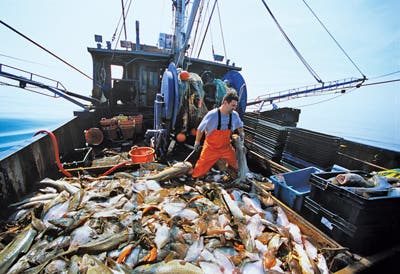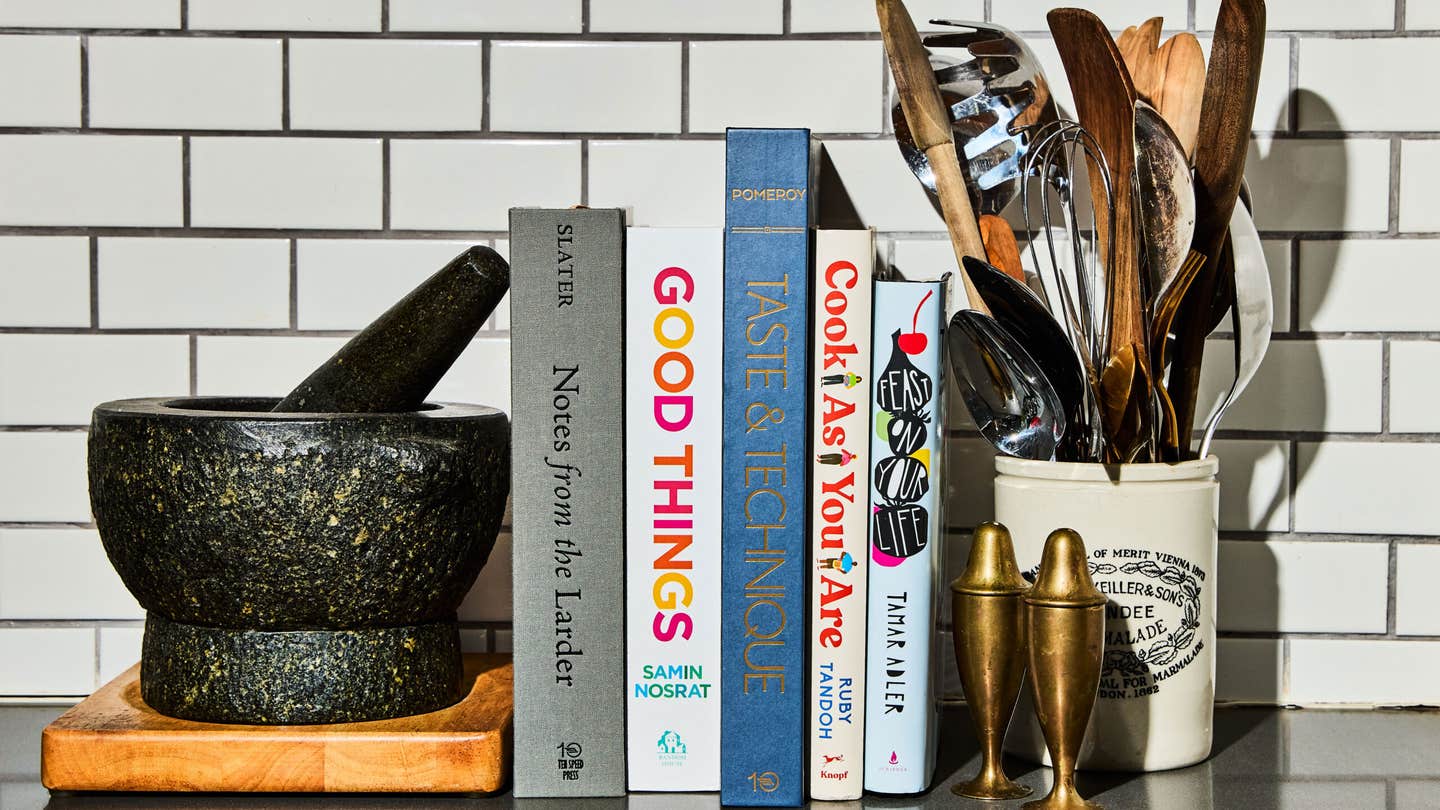
The Price of Fish
If you've eaten a fish caught off the northeastern coast of the United States in the past few years, chances are good that it passed through the giant refrigerated warehouse of the Gloucester Seafood Display Auction in Gloucester, Massachusetts. That's where I met Steve Dunn, a fish grader, one morning last April. At 4:00 a.m., the building, big enough to hold three basketball courts, was filled with row after row of black plastic bins called totes, each tagged with a lot number and filled with ice and about 100 pounds' worth of whole fish—cod, haddock, monkfish, skate, pollack, flounder, hake, and sole—that had been unloaded from three boats a few hours earlier.
Dressed in a hooded sweatshirt, Dunn meandered among the totes as I walked alongside him. He prodded the fish, and he jotted observations on a clipboard. Dunn and his colleagues, mostly former fishermen, act as the eyes and noses for more than 30 wholesalers and retailers scattered across the country. Recognized as the premier seafood auction in the East, the Gloucester Seafood Display Auction handles about 15 million pounds of fish each year, brokering sales for buyers as far afield as Atlanta, Denver, and San Francisco, supplying wholesale centers like New York City's Fulton Fish Market, and selling to companies like Whole Foods Markets and the restaurant chain Legal Sea Foods. Even if the fish you're eating wasn't sold at the auction, the price you paid for it was largely determined by what someone shelled out here.
Done with their rounds, Dunn and the ten other graders descended a flight of stairs and entered a large, glass-walled room. Bantering and joking, the men sat down at long desks; then they popped open laptops and started transcribing their notes, which they'd e-mail to the remote buyers. At a few minutes before six, the chatter stopped. I went upstairs to a sellers' monitoring room, where the auction house's owner, Larry Ciulla, greeted me brusquely and invited me to take a seat.
Ciulla and his sister Rosemarie are the third generation of their family to run the business. Until the mid-1990s, the company was strictly a wholesaler, buying directly from boats and selling to customers. But Ciulla, who is 50, saw a need for a more transparent system in which buyers could compete with one another openly and product could be more readily identified with specific fishermen. He invested $4 million in the auction facility and, in 2006, reinvented the business by putting the bidding online. "You could be in Timbuktu and bid here," Ciulla said to me in a thick Massachusetts accent.
Along with a few sellers, we settled into chairs facing a flat-panel screen on the wall. At precisely six o'clock, the screen flashed to life, displaying a series of icons. "Those boxes on the left are for the name of the boat, the species of fish, its weight, and the lot number," Ciulla said. "That thing that looks like a clock keeps track of the amount that's being bid." The name of a boat called the Miss Trish appeared at the left of the screen. A 300-pound lot of haddock was on the block. The hand of the "clock" started to move backward, and a number alongside it began counting down from an initial price of 70 cents (based on the quantity of fish available and what it sold for the previous day), finally stopping at 34 cents. The computer issued a ping. "Someone just bid," said Ciulla.
What had physically happened was that, somewhere in the U.S., a buyer had pressed his computer's space bar to put in his bid and was holding it down to stay in the running. Now other bidders were pressing their space bars. The number 7 appeared next to the clock. "Seven bidders are in," said Ciulla. The hand of the clock crept forward. As the price rose, the number of bidders started to fall. At 43 cents, the hand of the clock stopped. The image of a gavel appeared, and it came down with an electronic thwok. The words Captain Marden's flashed on the screen. "That's the buyer," said Ciulla.
Ciulla charges fishermen, on average, about seven cents a pound for his services. Buyers pay him an additional ten cents a pound. "You have a business, you gotta make money," he told me. "But the satisfying part of this is providing a service to the fishermen. They are all true heroes. Every day out there is like The Deadliest Catch."
In less than 50 minutes, every single lot in the warehouse had been sold. In the display area, forklifts whizzed back and forth, carrying totes to refrigerated trucks that had backed up to the warehouse's loading doors. The truck from Captain Marden's, a local wholesaler, drove off with 3,100 pounds of cod and haddock, destined for a processing facility nearby. There, after being fileted and packed in Styrofoam shipping boxes, the fish would be distributed to Boston-area hotels and restaurants.
A few hours after the fish was purchased, one of those boxes, packed with haddock filets, was delivered to the Captain's Table, a seafood joint in Wellesley, Massachusetts, that's run by the Marden family. I stopped by the restaurant for lunch the next day and ordered the broiled haddock, which was delicious. In the two days or so after it was pulled from the sea, the fish I was eating had gone from the hold of the Miss Trish to Larry Ciulla's warehouse to a processing facility to a restaurant kitchen to my plate. Over the course of that journey, the fish's price had risen from 36 cents a pound—which is what the fisherman got, after paying his share to Ciulla—to $25.90 a pound, which, according to my calculation, is what I paid for it when the waitress, smiling, presented the check. —Barry Estabrook, author of the blog www.politicsoftheplate.com
Keep Reading
Continue to Next Story










